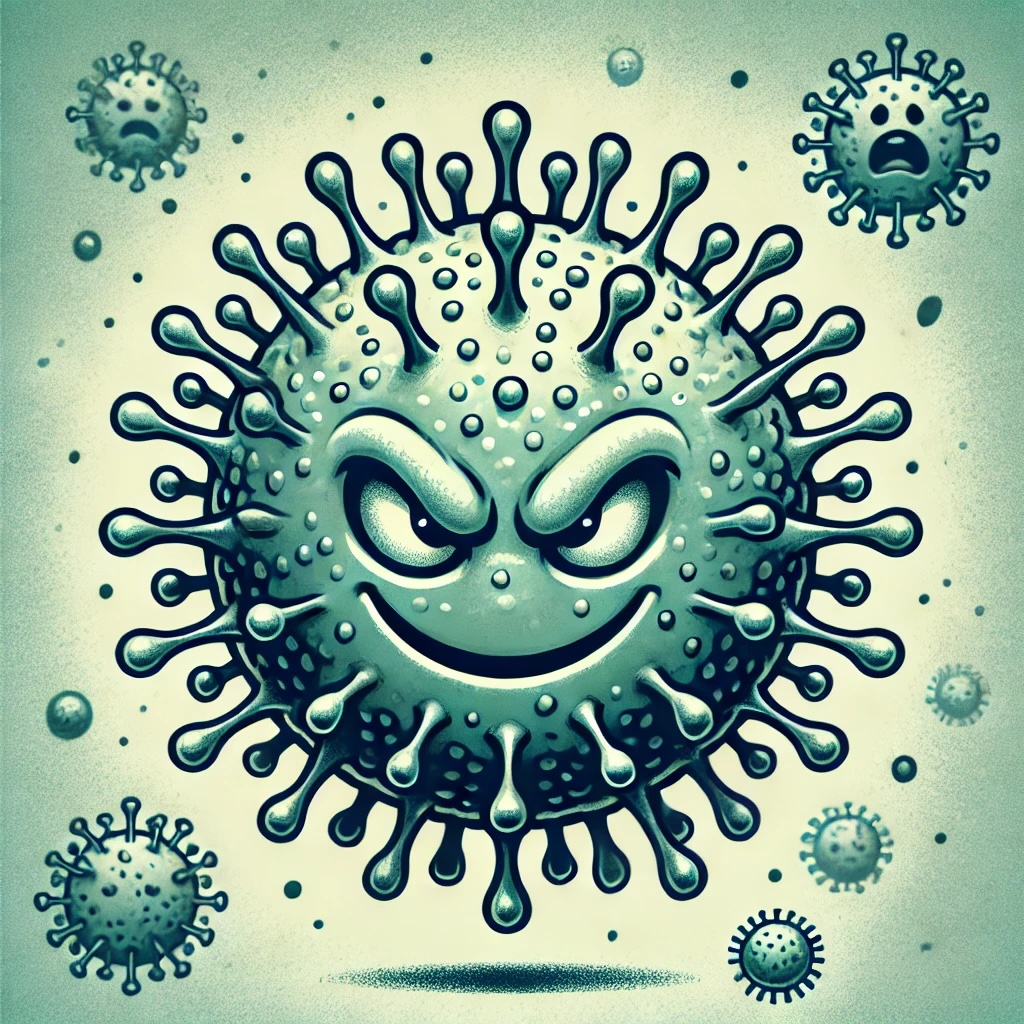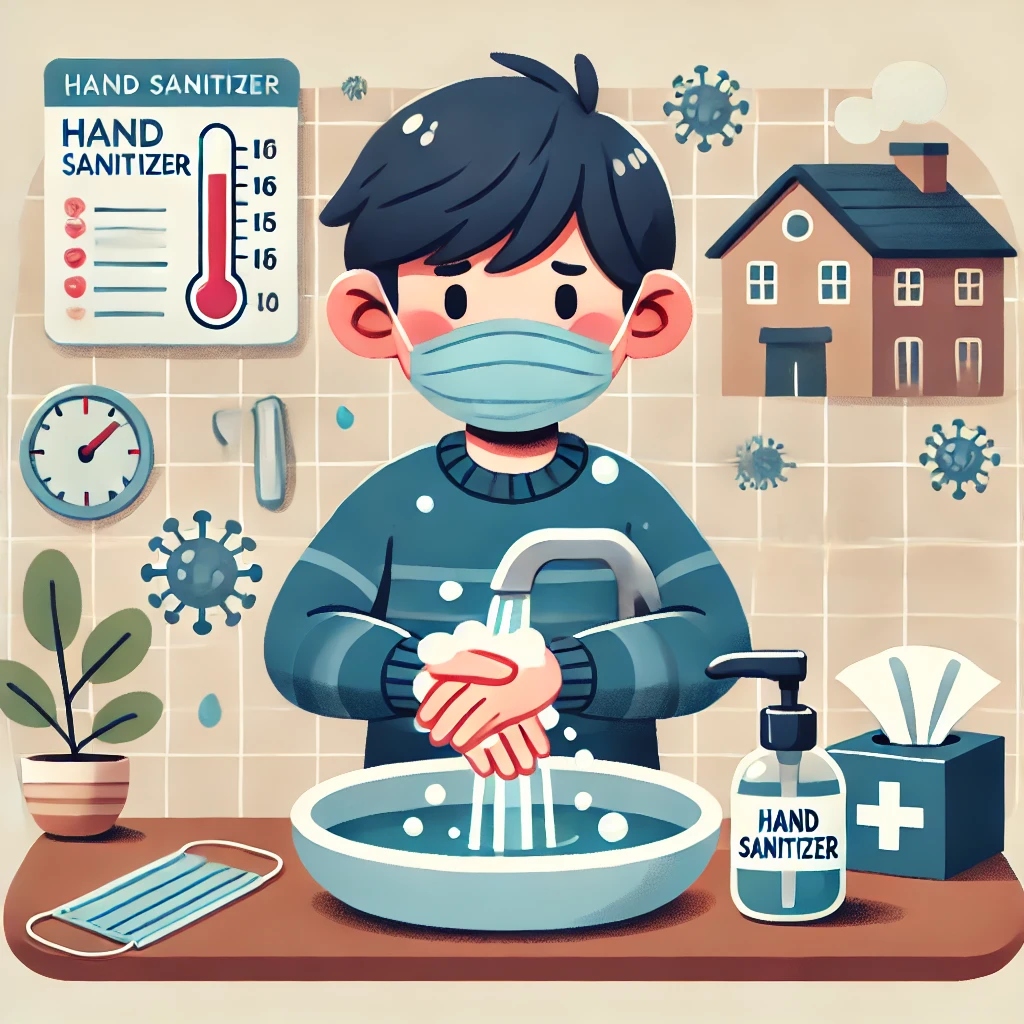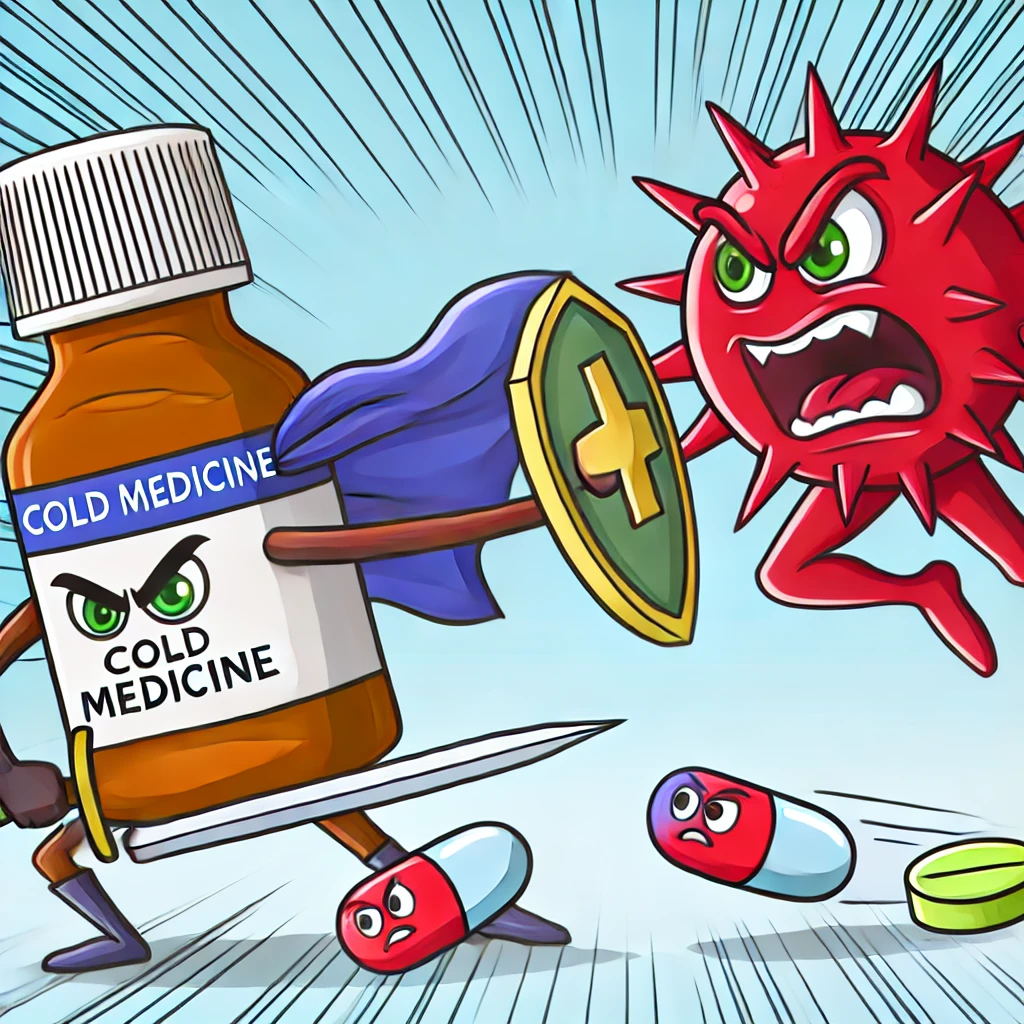
Colds are primarily caused by cold viruses. There are various viruses that cause colds, with the most common being the rhinovirus. The reasons for catching a cold can be explained in more detail as follows:
1. Viral Infection: A cold occurs when viruses invade the upper respiratory tract (nose, throat, and airways). These viruses can be transmitted through tiny droplets in the air or through objects touched by an infected person.
2. Weakened Immune System: A weakened immune system makes it easier for viruses to invade the body. Fatigue, stress, and lack of sleep are major factors that weaken the immune system.
3. Environmental Factors: Dry air or sudden changes in temperature can dry out the mucous membranes of the upper respiratory tract, making it easier for viruses to invade. This is one reason why colds are more common in winter.
4. Contact Transmission: Cold viruses are primarily spread through droplets produced by coughing or sneezing. When an infected person coughs or sneezes, the virus spreads through the air and can infect others who inhale it. Additionally, touching objects that an infected person has touched and then touching your mouth, nose, or eyes can lead to infection.
5. Lack of Personal Hygiene: Not washing hands frequently or having habits like touching the nose and mouth can increase the likelihood of catching a cold.
These factors combine to cause colds. To prevent colds, it is important to maintain hygiene and strengthen the immune system.
Colds in children and adults show similar symptoms but have some differences:
1. Frequency: Children catch colds more frequently because their immune systems are not fully developed. Infants and elementary school children can catch colds multiple times a year. In contrast, adults typically catch colds about 2-3 times a year on average.
2. Symptoms: Both children and adults experience symptoms like cough, runny nose, sore throat, and fever, but children’s symptoms can be more severe. Children often have higher fevers.
3. Complications: Children are more likely to develop complications from colds. Conditions like otitis media (ear infection), bronchitis, and pneumonia are more common in children because their airways and ears are narrower and more susceptible to infection.
4. Immune Response: A child’s immune system is not as mature, so their response to infection can be different. They may not respond quickly to infections because they have less exposure to various viruses.
5. Treatment: Medications used for children can differ from those used for adults. Some ingredients are not safe for children or require different dosages, so it is important to use medications specially formulated for children. For example, aspirin is not used in children because it can cause a serious condition called Reye’s syndrome.
6. Vaccination: Children receive various vaccinations to prevent infections like the flu, which can cause symptoms similar to a cold. Adults can also receive vaccinations, but children receive more vaccines at a younger age.
In conclusion, while colds in children and adults are caused by similar viruses, there are differences in symptoms, frequency, treatment methods, and the likelihood of complications. It is especially important to closely monitor and properly treat colds in children.

To prevent catching a cold, the following methods can be helpful:
1. Hand Washing: Regularly washing your hands with soap and water is effective in removing cold viruses. Make it a habit to wash your hands after going outside, before meals, and after using the restroom.
2. Boosting Immunity: Getting enough sleep, eating a balanced diet, and exercising regularly help strengthen your immune system, which can prevent colds.
3. Staying Hydrated: Drinking plenty of water helps maintain the body’s fluid balance and keeps the mucous membranes moist, preventing cold viruses from entering the body.
4. Appropriate Clothing: Dress according to the weather to keep your body warm. Maintaining body temperature is especially important in winter.
5. Managing Stress: Stress can weaken the immune system, so it is important to reduce stress and maintain mental stability.
6. Vaccination: Getting a flu shot reduces the likelihood of catching the flu, which has similar symptoms to a cold.
7. Avoiding Sick Individuals: Avoid contact with people who have a cold, and wear a mask in crowded places to prevent the spread of viruses.
These methods can help reduce the chances of catching a cold.

Cold medicine helps alleviate the symptoms of a cold. While it does not cure the cold itself, it can reduce various symptoms and provide relief from discomfort. Generally, the effects of cold medicine are as follows:
1. Antipyretics: Used to reduce fever and relieve pain. Commonly includes acetaminophen (Tylenol) or ibuprofen.
2. Pain Relievers: Helps alleviate headaches, muscle pain, and sore throat. Similar to antipyretics, acetaminophen or ibuprofen are used.
3. Cough Suppressants: Medications that reduce coughing. Ingredients like dextromethorphan suppress coughing.
4. Mucolytics and Expectorants: Helps thin mucus and make it easier to expel through coughing. Ingredients like guaifenesin may be included.
5. Antihistamines: Reduces symptoms like runny nose, sneezing, and watery eyes. Includes ingredients such as chlorpheniramine and diphenhydramine.
6. Decongestants: Relieves nasal congestion. Ingredients like phenylephrine and pseudoephedrine constrict blood vessels in the nose to reduce congestion.
7. Antibiotics: While they do not directly affect cold viruses, they are prescribed only if there is a bacterial infection present. Since colds are caused by viruses, antibiotics are generally not needed in most cases.
These cold medicines are sold individually or as combination products, and it is important to choose them according to your symptoms. When taking cold medicine, consult a pharmacist or read the medication label carefully, and follow the prescribed dosage and instructions.

There are several differences between medications for children and adults. These differences are mainly due to drug safety, appropriate dosage, and the physical characteristics of children. Here are the key differences:
1. Dosage: The dosage of medication for children is determined by their weight and age. The dosage used for adults cannot be directly applied to children. Children’s medications are generally formulated at lower dosages and adjusted according to weight or age.
2. Form of Medication: Children may have difficulty swallowing tablets, so medications are provided in the form of syrups, liquids, chewable tablets, or powders. For adults, tablets or capsules are more common.
3. Ingredients: Some medication ingredients are not used for children or require caution. For example, aspirin is not used in children because it can cause a serious condition called Reye’s syndrome. Additionally, some ingredients in cold medicine may not be suitable for children.
4. Combination Products: Adult cold medicines often contain multiple ingredients to treat various symptoms at once. In contrast, children’s medications typically target a single symptom with one active ingredient. This reduces the risk of adverse effects from combination products in children.
5. Safety: Children’s livers and kidneys are not as developed as those of adults, so the way medications are metabolized and excreted can be different. Therefore, some medications may be inappropriate for children or require dosage adjustments.
6. Taste: The taste of children’s medications is important. Bitter or unpleasant tastes can make it difficult for children to take their medicine, so children’s medications are usually made to taste better.
Understanding these differences in medication use for children and adults is important. Always follow the guidance of a doctor or pharmacist when administering medication. It is especially crucial to use medications specifically designed for children and to adhere to the exact dosage.



